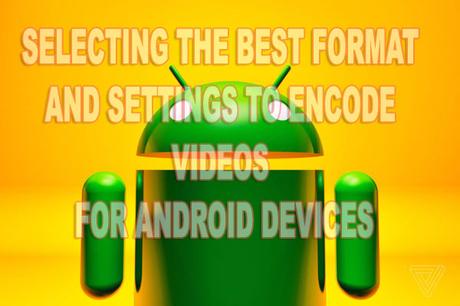Are you trying to encode a video so that it can be viewed without any difficulty on Android devices and is optimized for them? In most cases, your focus should be on finding a format that is compatible and is able to compress the file size as much as possible without affecting its quality.

At the same time the video settings can also be optimized, to match the requirements of Android devices.
Unfortunately, encoding videos for Android devices can be a little bit tricky due to the fact that there are so many different types of Android devices out there – each with their own specifications.
Video Format – Container and Codec
A good place to start is to select the video format, both in terms of its container as well as the codec. Typically the container that is used most frequently to encode videos for Android is MP4, due to the fact that it is natively supported on most Android devices.
Other containers such as MKV and AVI may be supported by some Android devices as well, though often a special player will need to be downloaded to view them.
Similarly, the most popular codec on Android right now is H.264 – making it a good option. Newer codecs such as H.265 aren’t as widely supported, though many new Android devices do support H.265 in some form or other.
In short, if you want to encode the video to be generally compatible with most Android devices you should use MP4 with H.264. However, if there is a specific device it will be viewed on that has the right support – you could look at MP4 with H.265 to compress it further and conserve storage space.
Video Settings
Optimizing the other video settings for Android devices can be a bit more complicated, and there are several factors that you need to consider:
- Resolution is often best at 720p, as not all Android devices have 1080p displays.
- A frame rate of 30 frames per second is acceptable, though many Android displays can support 60 frames per second.
- Video bitrate should be based on the format, resolution and frame rate and should be high enough to avoid compression artifacts.
As you can see the fact that Android devices have varied specifications makes it difficult to optimize videos – unless the video will only be viewed on a specific device.
Conclusion
Overall it is best to encode or transcode videos to MP4 for Android devices, especially if the original video format is less popular and only used in specific cases. For example, if your video is in MTS you should certainly find an MTS to MP4 converter, such as Online Video Converter.
As far as the rest of the video settings go, a 720p 30 fps video should be good for most cases unless you want to encode it in a higher quality. Just remember that not all Android devices may be able to benefit from higher quality videos, however.
Don't Miss Any Post Again. Subscribe To Our Feed And Be Updated
Enter your email address below:
Powered by OnenaijaBlog
FacebookTwitterGoogle+LinkedinStumbleupon
